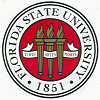

In a coup for Florida State University and its ambitions to become a major research institution, a futuristic-sounding Applied Superconductivity Center is coming to Tallahassee.
The center has been wooed away from the University of Wisconsin at Madison, where it's been for more than 20 years. It rejected an offer to relocate to Arizona State University. The chance to work with scientists here at the National High Magnetic Field Laboratory was too good to resist.
"The mag lab was the key. It's always exciting to be associated with the best in the world," said David Larbalestier, director of the Applied Superconductivity Center. "The wonderful synergy and excitement and stimulation associated with that - that's why we decided to come to Tallahassee."
The deal is to be announced today.
The center brings to Tallahassee, as well as FSU, several dozen high-wage, high-tech jobs on a research team that will be based at Innovation Park and part of the mag lab. It eventually could spin off local businesses manufacturing superconducting materials.
"This is a pretty big catch," FSU President T.K. Wetherell said, describing a months-long duel with Arizona State over the center. "We used every chit we could get. We have no mercy."
"It's part of our plan to enhance our image as a graduate-research institution," added Wetherell, whose goal is to get FSU invited into the prestigious, research-oriented American Association of Universities. "The way we think we do that is by hiring clusters of scientists, rather than picking them up one by one, and emphasizing certain areas."
Being in Florida's capital city, where researchers can drive across town to lobby leaders for state money and support to leverage additional federal funding, was a bonus, Wetherell said.
The center researches how to produce wire with superconductivity traits. This next generation of wires will transmit electricity more efficiently, without the energy loss that currently occurs. Development of superconducting materials may lead to more powerful magnets to help with the discovery of new drug therapies.
Larbalestier, one of the world's leading researchers in superconducting materials for magnets and power applications, will move to Tallahassee next year, along with two principal researchers, Peter Lee and Alex Gurevich. They will bring an entourage of up to 30 post-doctoral researchers, graduate students and staff, along with more than $2 million in research grants.
FSU plucked $2 million from its budget to pay for the researchers' salaries, laboratory space and equipment, and is using another $1.5 million to renovate the Shaw Building at Innovation Park to provide room for the newcomers.
The deal was bolstered by offices, lab space and other support coming from the mag lab, the mechanical engineering department at the FAMU-FSU College of Engineering, the FSU Center for Materials Research and Technology and the FSU Center for Advanced Power Systems.
"Superconducting materials allow you to generate super high-magnetic fields with a minimum of energy," said Brooks Keel, FSU associate vice president for research. He and Kirby Kemper, FSU vice president for research, were key negotiators with the center, along with mag-lab director Greg Boebinger.
"The Wisconsin lab could have gone anywhere in the world, but they saw the opportunity here," Keel said.
Said Wetherell, "We are already at the forefront of magnetic research. Now we can move even further ahead."